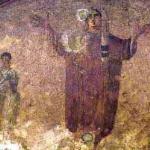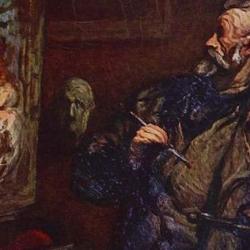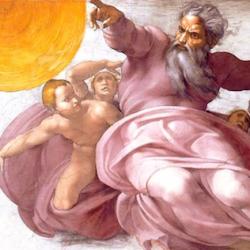Jean-Marie Schaeffer (Art of the Modern Age: Philosophy of Art from Kant to Heidegger (New French Thought Series) has a blast pointing out the contradictions in Kant’s aesthetics. Most of them arise from Kant’s insistence that the judgment of taste is founded on “the form of a finality” that excludes any specific end. That is, aesthetic judgment responds to the sheer form of finality, not to any particular purpose of the object judged.
This is in a sense just a teleological way of stating the principle of “disinterestedness” that Kant inherited from earlier writers on aesthetics: If we judge a table for its usefulness as a platform for food and drink, we are not making an aesthetic judgment. We have to evaluate without any notion of end.
Combined with this is Kant’s recognition that any artistic object is, inherently, purposive. That is because the artist at least intended to evoke pleasure, satisfaction, or provocation from his viewers. Natural beauty, by contrast, is not purposive, since, in Kant’s view, it is not an artistic product with a definite end.
As a result, Schaeffer writes, “artificial beauty is aesthetically less central than natural beauty it never elicits are pure aesthetic judgment,” that is, a judgment purified of interest and intent.
This has some disagreeable consequences.
It means that for Kant, artistic objects are most effective when they conceal their artificiality; there is an inherent deceptiveness in art. Truth and artistic beauty seem uncoupled at a basic level. It also means, Schaeffer says, that the art “most in conformity with the pure judgment of taste will be purely decorative art,” since “canonical arts” are either representational or are linked to a use (like architecture, or music composed for singing).
But the problem is more fundamental for Kant, since this conclusion that decorative art is the most purely aesthetic of human products “collides head-on with another Kantian thesis, according to which purely decorative works belong to the category of the agreeable rather than to the beautiful, for they please chiefly at the level of empirical sensation.”
Kant’s theory of genius is an effort to sidestep or overcome this contradiction. A genius is a kind of conduit of nature; his works are not the product of the application of rules, but a product of an inexplicable inspiration.
But this doesn’t help Kant much. Even genius painters have to know how to mix and apply paint, purely mechanical matters. Besides, genius, Kant wants to say, produce works of art that are exemplary, both for other geniuses and for pupils who are not geniuses. Pupils can abstract from the exemplary works of their genius master rules by which they reproduce works similar to their master’s.
Schaeffer asks: “if the work remains essentially opaque to the genius who produced it, and even to the genius-disciples who are inspired by it . . . , by what miracle can it become transparent for ordinary receivers who can only be imitators?” Indeed.
All these problems arise because of Kant’s obsession with purity. He wants aesthetic judgment purified of interest; aesthetic objects purified of intentionality; aesthetic judgments purified of any concept that would bring them back into the realm of pure or practical reason.
Hamann, again, got it right: The better aesthetics is the impure aesthetics, the aesthetics that recognizes the coinherence of reason and sensation, an incarnational aesthetics that unfolds the aesthetic consequences of the communicatio idiomatum.












